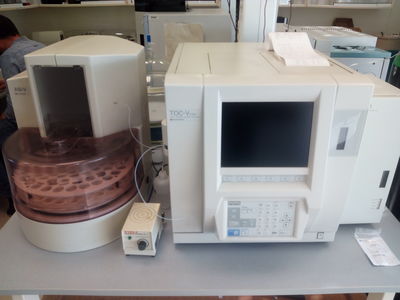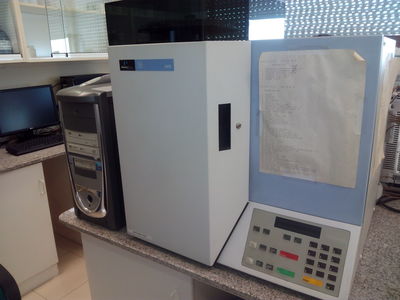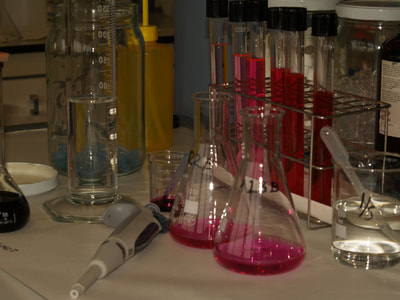Laboratorio de Técnicas Instrumentales Biogeoquímicas
El servicio de Análisis de Técnicas Instrumentales Biogeoquímicas del Museo Nacional de Ciencias Naturales – CSIC de Madrid está especializado en determinaciones físicas y químicas en muestras líquidas (aguas naturales) y sólidas (sedimentos y plantas) para el estudio ecológico y biogeoquímico de los ecosistemas acuáticos continentales. Presta su asistencia tanto a grupos de investigación del MNCN y de otros centros del CSIC como a otros organismos o entidades públicas o privadas, que así lo soliciten. El servicio cuenta con un Analizador Elemental Perkin Elmer 2400 Serie II, un Espectrofotómetro Lambda 35 (Perkin Elmer) que opera un amplio rango del espectro UV y visible con doble haz de luz, un analizador de Carbono Orgánico Total marca Shimadzu, modelo TOC-V CSH que lleva acoplado un módulo de detección de Nitrógeno Total para la serie TOC-V, un Analizador de flujo segmentado en continuo SEAL Analytical AutoAnalyzer 3 y un Cromatografo de Gases Agilent Technologias 6890N. Aparte, el servicio cuenta con toda la equipación necesaria para llevar a cabo los análisis químicos (estufa, mufla, baños de arena, placas calefactoras, pH-metro, centrífugas, etc). El laboratorio está dotado con una balanza analítica (alcance 120 g; d 0,0001) Mettler-Toledo ML104/01 y una micro balanza (alcance 6g; d 0,000001) Mettler-Toledo XP6.
The laboratory is located in the ICA building (5th floor) and supports research on the biogeochemistry of a variety of systems, but particular attention is focused on aquatic systems. The laboratory has the potential to perform a wide range of soil, vegetation and water chemistry analyses commonly associated with elemental cycling research. Equipment includes chemical instrumentation for quantifying different analyte concentrations, drying ovens, incubators, balances, a muffle furnace, filtering apparatus, vacuum hoods, sampling devices, PC's and printers.
Available analyses in the laboratory:
1) In water samples:
- Total organic carbon (TOC) in water samples, including particulate organic carbon (POC), dissolved organic carbon (DOC) and total nitrogen (TN)
- Ammonium, nitrite, nitrate, orthophosphate and total phosphorus (TP), following APHA (2005)
- Total solids (110 ºC), total mineral and organic matter (loss of ignition 550 ºC), suspended solids, carbonates-bicarbonates, clorides, sulfates, calcium, magnesium, sodium, potasium, silica, total, temporary and permanent hardness, following APHA (2005)
- Water colour (ʎ = 440 nm, in mg Pt/l)
- Chlorophyll-a (after methanol extraction, following Maker et al. (1980)
- Dissolved oxygen by the Winkler (tritation) method, following APHA (2005)
2) In soil/sediment samples:
- Soil water content (gravimetric method)
- Elemental analysis of C, N and P (after acid digestion using ammonium persulfate/sulfuric acid)
- Nutrient extraction (nitrogen with CaCl2 and assimilable phosphorus with the Olsen method) for further analysis following previous description (see 3)
- Carbonates using the Bernard calcimeter
- Microbial biomass C, N and P by chloroform fumigation-incubation method (Brookes et al. 1985, Inubushi et al. 1991, Ivanoff et al. 1998, Witt et al. 2000, Truu et al. 2009, Sánchez-Carrillo et al. 2014) and then measured by the Shimadzu TOC-V analyzer (C and N) and by the SEAL autoanalyzer (P, after acid digestion; see above)
3) In plant samples:
- Chlorophyll-(a+b) after methanol extraction and following Porra, Thompson and Kriedemann (1989)
- Elemental analysis of C, N and P (after acid digestion using ammonium persulfate/sulfuric acid)
To contact with the Lab for any question, support or analysis request, please e-mail to José Luis Ayala (jlayala@mncn.csic.es)








